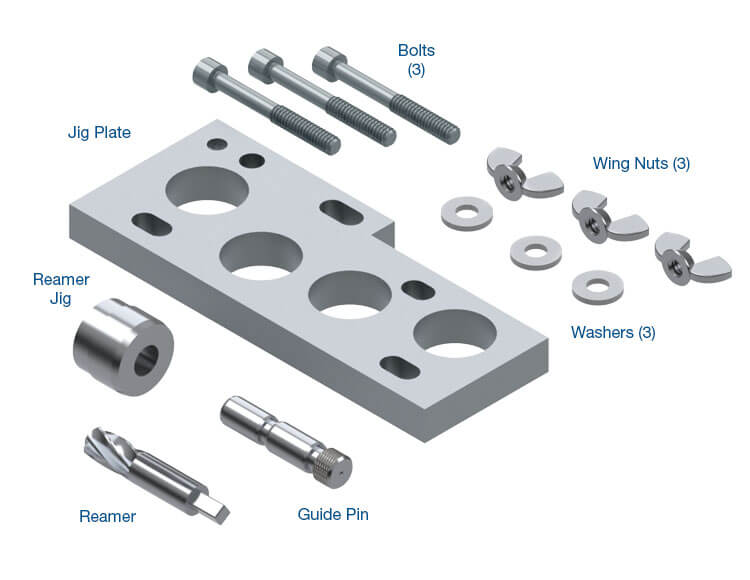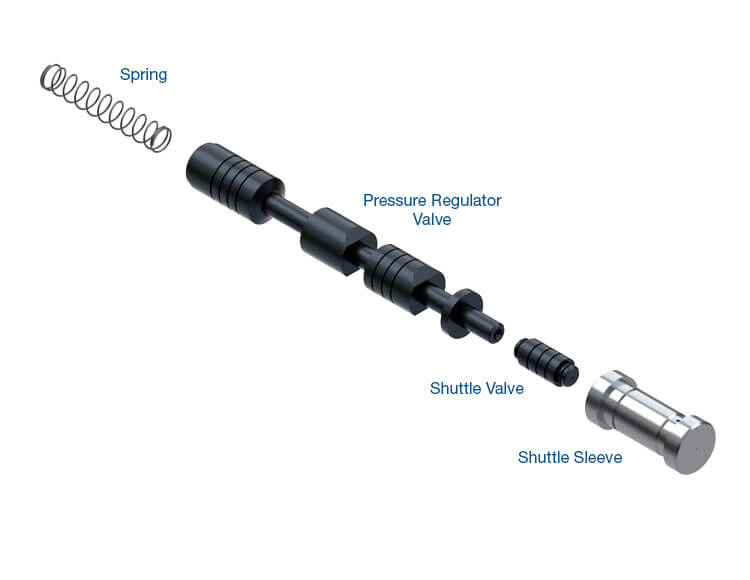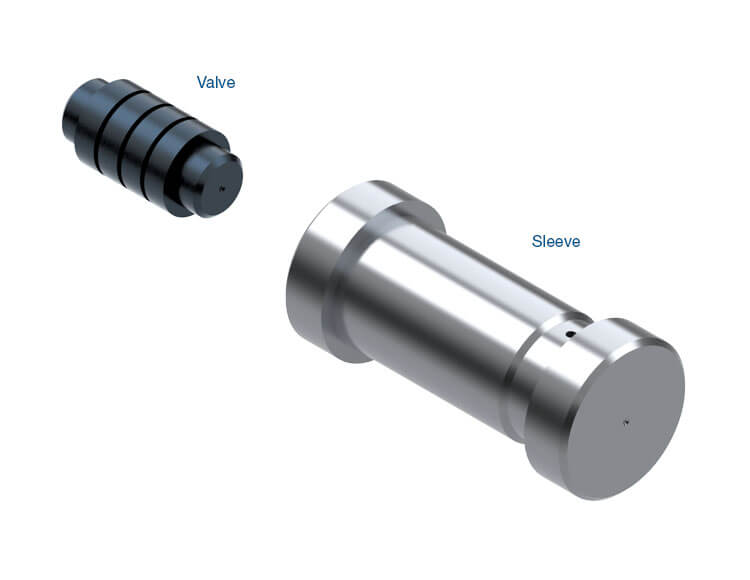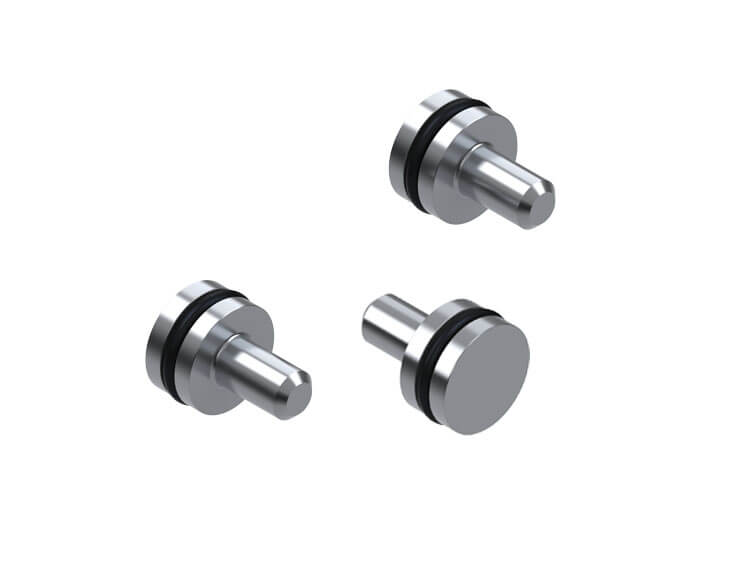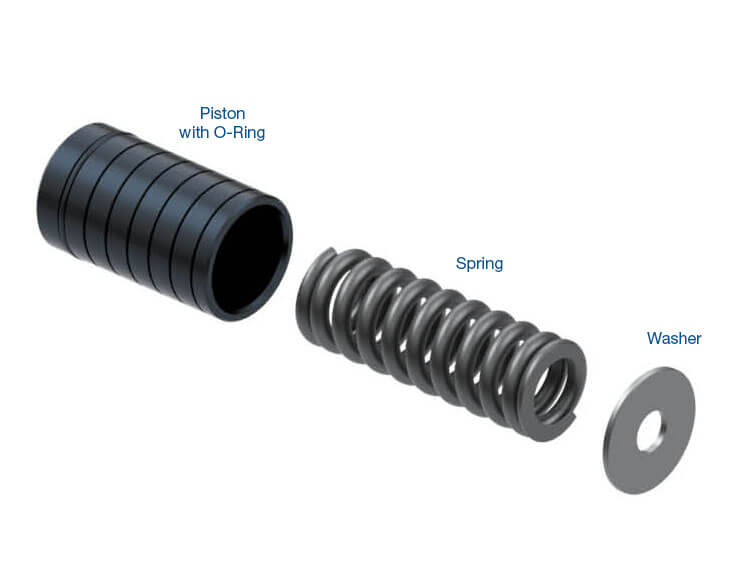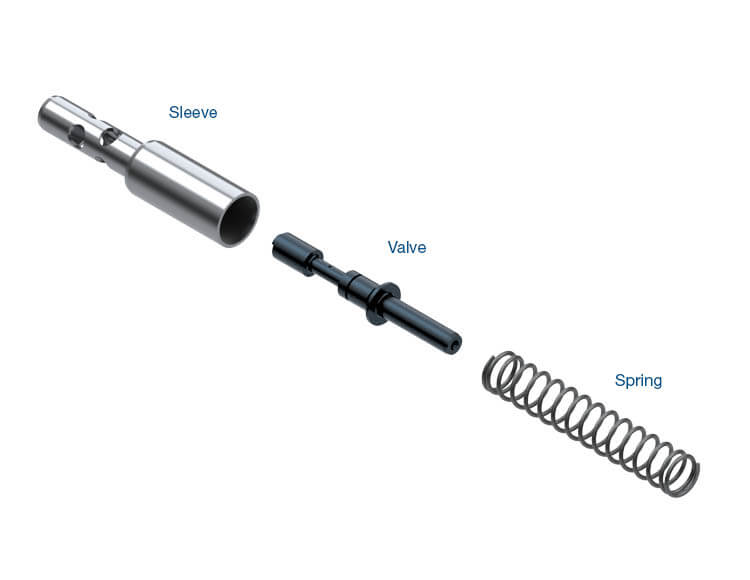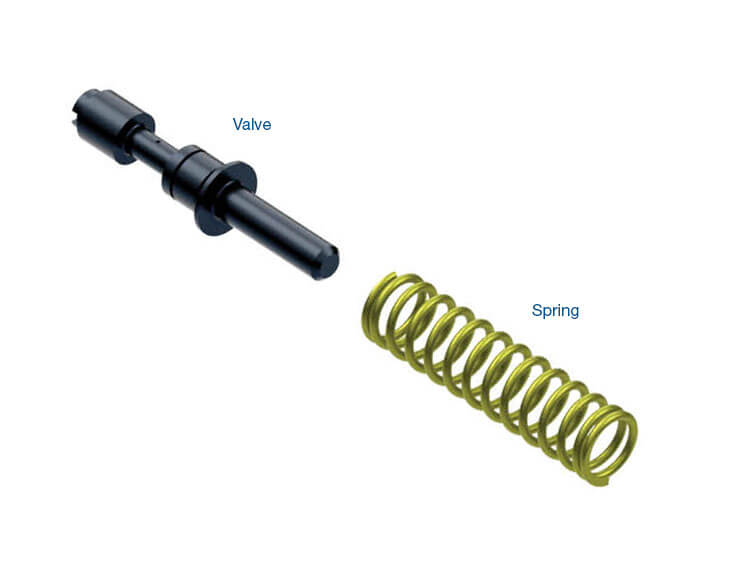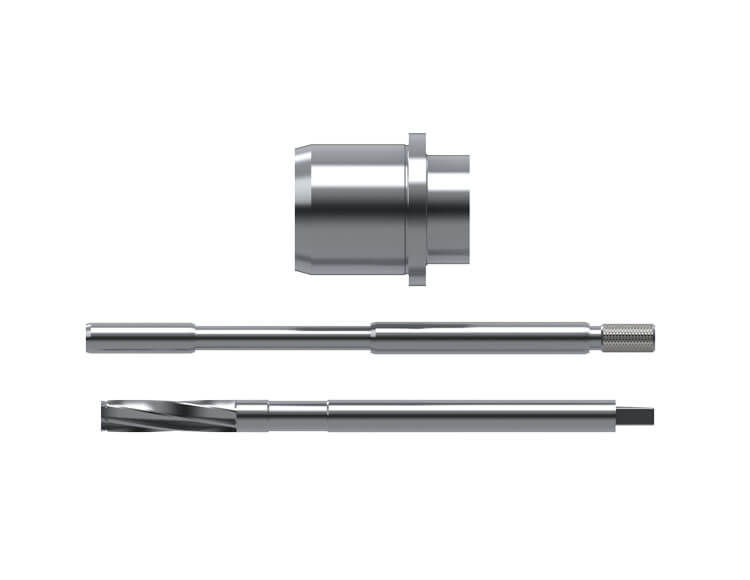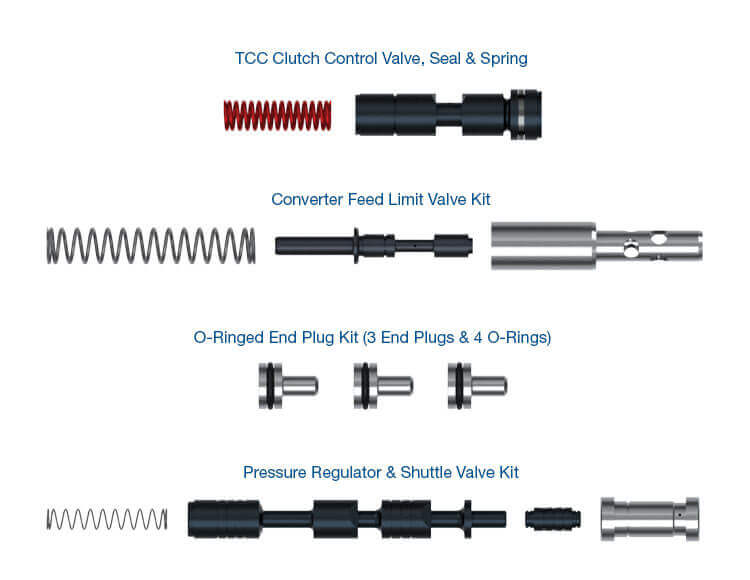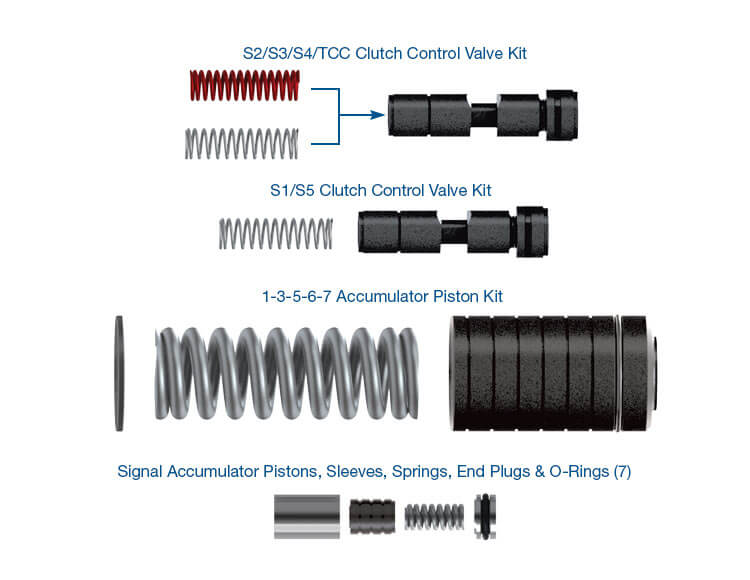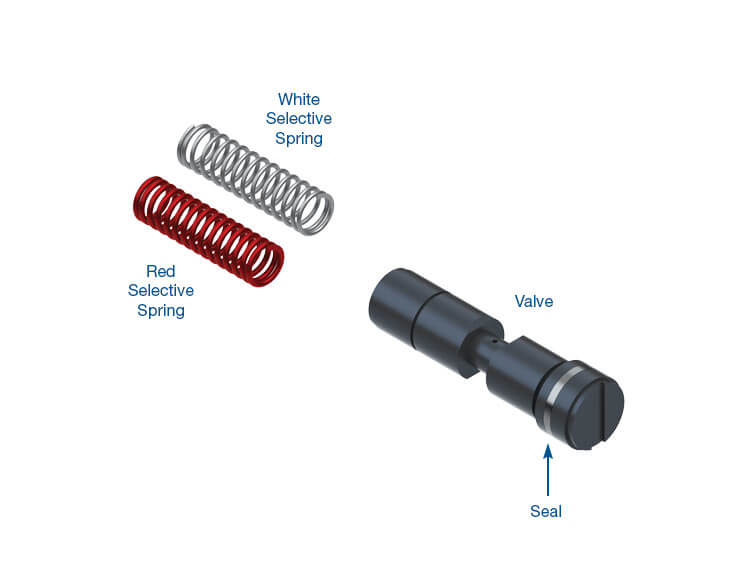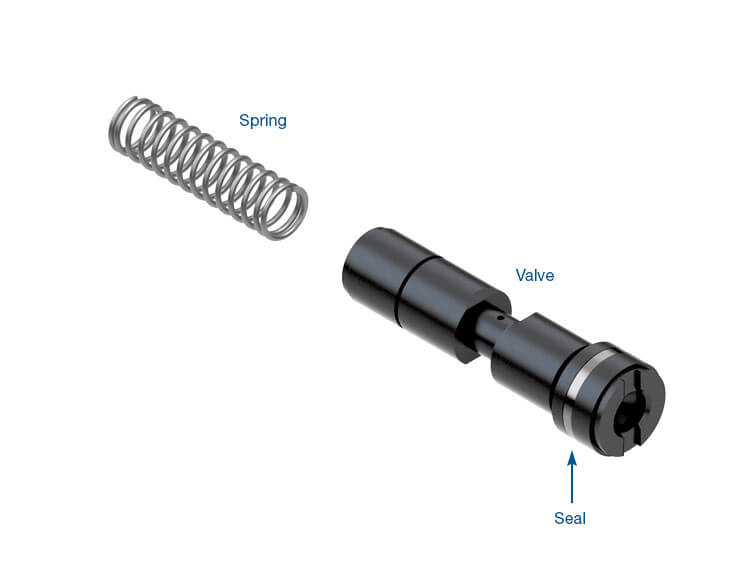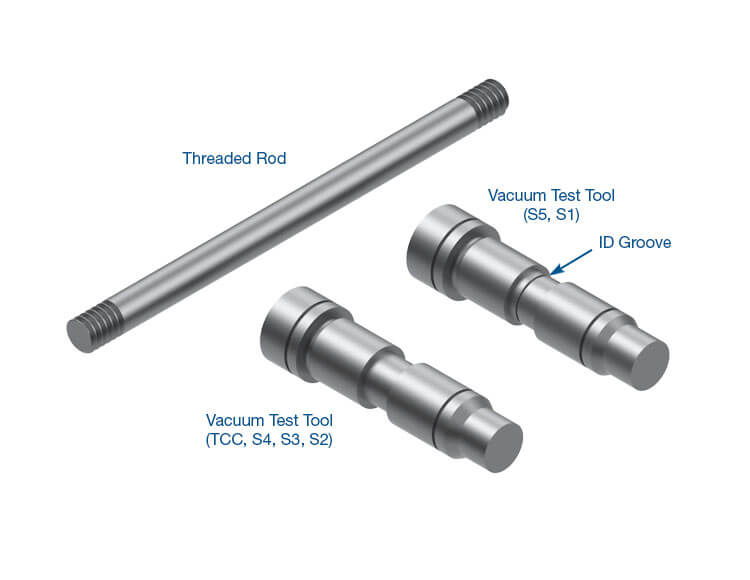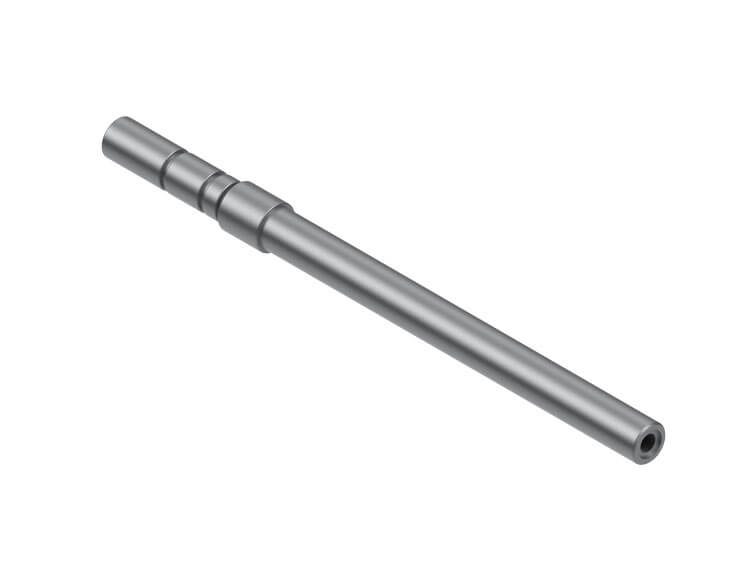Diagnosing the Infamous GM 8L45, 8L90 3-4 Neutral: Check Your Solenoid Wiring Harness Assembly
Jim Mobley
Today we are examining what is called a twilight zone transmission complaint: an issue that appears out of nowhere while performing a small, insignificant repair and initially makes little sense. The GM 8L45 and 8L90 3-4 Neutral condition that has been baffling many shops/techs is one of these types of complaints.
PROBLEM: 3-4 Shift is Neutral after installing temp sensor and updated wiring harness.
Initially, this complaint occurs because the vehicle arrives at the shop with a P0711 TFT temp sensor code. I have also run into this with dealer-auction vehicles that end up in automotive and transmission shops for work. The repair usually requires replacement of the temp sensor along with an updated harness, which requires valve body removal and reinstall. This should not be a complicated repair, but Murphy’s Law starts playing havoc in the background.
CAUSE: Wiring harness was incorrectly installed.
To the point, the 3-4 Neutral occurs in 8L45, 8L90 units because the S8 default control solenoid and S9 1-2-3-4-5-Reverse boost solenoid electrical connectors were swapped and hooked up incorrectly when the valve body and harness were reinstalled. The S8 default control solenoid and S9 1-2-3-4-5-Reverse boost solenoid are identical solenoids and share the same type of electrical connector, so it’s easy to assemble this incorrectly.
For an understanding of what occurs technically, when 4th Gear is commanded, the S8 default control solenoid is ON, however it now controls the S9 solenoid. S9, now ON, allows AFL oil pressure to travel through the solenoid to 1-2-3-4-5-Reverse clutch boost valve and stroke it against the spring-exhausting 1-2-3-4-5-Reverse clutch. This is the Neutral condition.
Diagnosis & Fix: First-time Diagnosis Can Be a Chore!
Without knowing the above, diagnosis gets rather tricky since many tech resources have these two solenoids incorrectly labeled as well as incorrect wiring diagrams. In other words, popular tech resources would lead you to believe an incorrect assembly is correct. Talk about confusion! Power flow and recorded scanner movies make little sense either. Many shops/techs, frustrated at this point in repair, have replaced valve bodies thinking that’s a possible solution, all the while installing the wiring harness and valve body incorrectly a second or even a third time.
After a point and going further in depth by checking the basics, such as wiring with a known good diagram, things suddenly start falling in place. You will find that the first wire you normally check on terminal 1 is hooked up incorrectly, so that means another wire is also hooked up incorrectly. Suddenly you discover two solenoids are incorrectly plugged in. Progress!
To verify the harness issue, check Figure 2 below. The S9 1-2-3-4-5-Reverse boost solenoid has 3.75" of conduit and a green wire with blue tracer to terminal 1 of connector. The S8 default control solenoid has 1.75" of conduit and a yellow wire with a red tracer to terminal 7 of the connector. The information in this article has been verified on multiple vehicles, and Figures 1 and 2 show correct assembly.
| Figure 1 – Correct Transmission Connector & Terminal Layout |
|---|
| Transmission Case Connector |
 |
| Solenoid ID | Terminal ID Case Connector | Component |
|---|---|---|
| S1 | 5 | 1-2-7-8-Reverse Clutch |
| S2 | 6 | 1-2-3-4-5-Reverse Clutch |
| S3 | 10 | 1-3-5-6-7 Clutch |
| S4 | 13 | 2-3-4-6-8 Clutch |
| S5 | 14 | 4-5-6-7-8-Reverse Clutch |
| S6 | 4 | Line Pressure |
| S7 | 3 | TCC |
| S8 | 7 | Default Control |
| S9 | 1 | 1-2-3-4-5-Reverse Boost |
| Figure 2 – Correct Solenoid Wiring Harness Assembly |
|---|
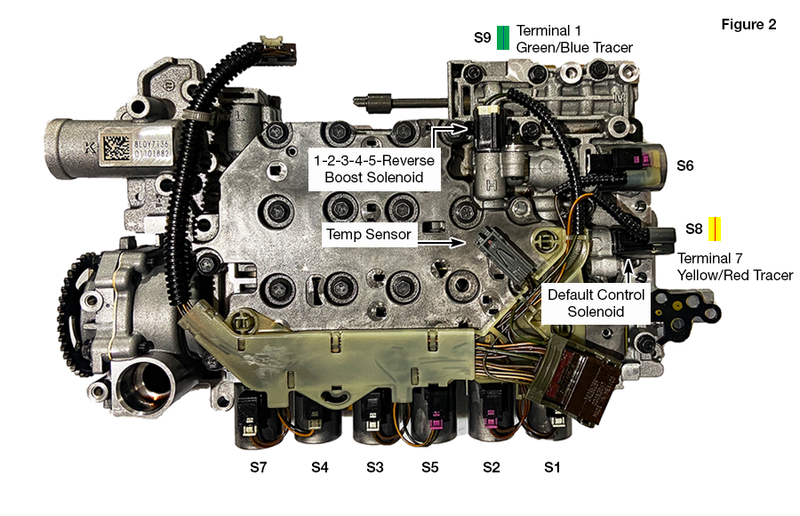 |
Thank you to Bob Nielson, owner of Bob’s Transmissions in Kansas. Bob first experienced this complaint, and his technical contributions were very instrumental for this article!
Jim Mobley is a Sonnax technical communications specialist. He is a member of the Sonnax TASC Force (Technical Automotive Specialties Committee), a group of recognized industry technical specialists, transmission rebuilders and Sonnax Transmission Company technicians.
Related Units
Related Parts
Required
Recommended
8L45, 8L90
Oversized Signal Accumulator Piston Kit 154740-01K
-
Helps cure:
- Poor shift quality
- Low line pressure
- No converter apply
- Hydraulic-related converter codes
- Burnt clutches
- Soft shifts
Required
Recommended
8L45, 8L90
Oversized Converter Feed Limit Valve Kit 154740-22K
-
Helps cure:
- Excess converter pressure
- High TCC slip RPM
- Code P0218
- Code P0741
- Overheated converter
- Inadequate lubrication
While Sonnax makes every effort to ensure the accuracy of technical articles at time of publication, we assume no liability for inaccuracies or for information which may become outdated or obsolete over time.

